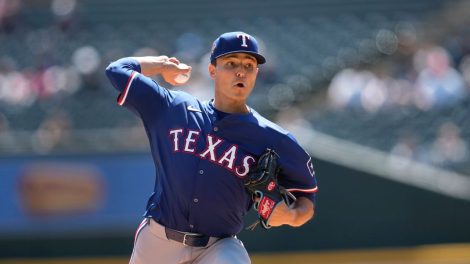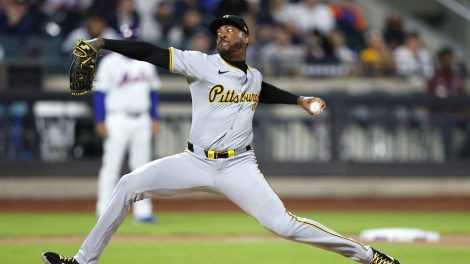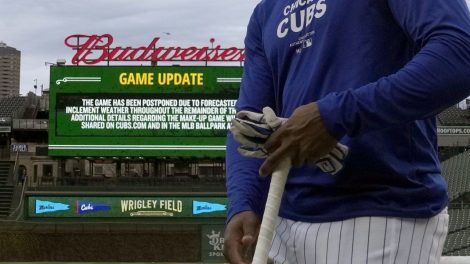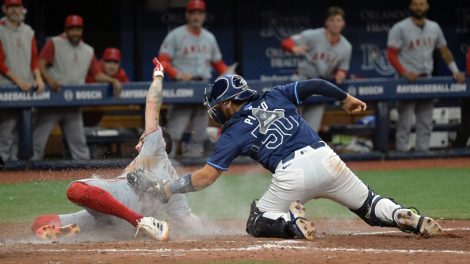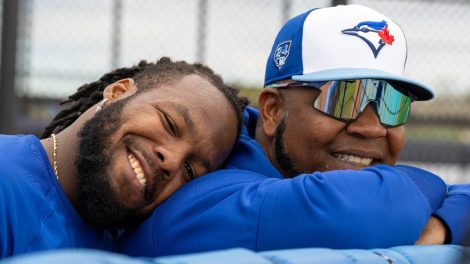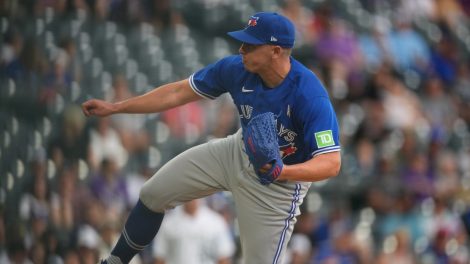As Toronto Blue Jays trade and free-agent targets like DJ LeMahieu, Francisco Lindor and Liam Hendriks make their way to other rosters, the club is being forced to pivot.
That doesn’t necessarily mean they won’t wind up with an impact player — the pursuit of George Springer appears to be ongoing, for instance — but it does mean reconsidering alternatives that may not have been part of Plan A.
For that reason, Kris Bryant’s name resurfaced in the rumour mill last week, albeit with the caveat that the Blue Jays haven’t engaged the Chicago Cubs about him recently. While Bryant is a former MVP and three-time all-star, he doesn’t offer the same certainty that LeMahieu or Lindor would have. After all, he’s coming off a season where he hit .206/.293/.351. He also plays third base, which means adding him would put a halt to the dream of Vladimir Guerrero Jr. owning the hot corner — at least temporarily.
Combine that with the fact he makes $19.5 million, and he would cost prospect capital to acquire, it’s easy to see why he’d seem like a bad bet. Grabbing Bryant only makes sense if you think his 2020 was an aberration, and nothing in his Statcast data says he was anything but bad.
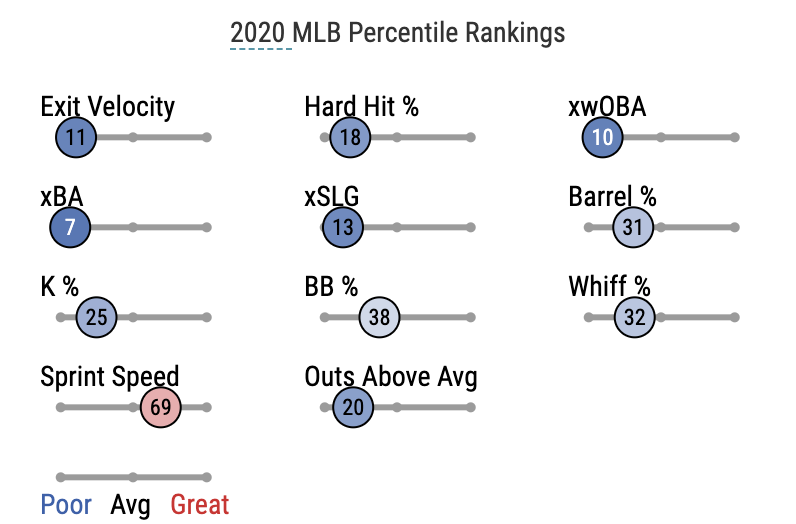
Considering the players the Blue Jays have been linked to, Bryant superficially appears to be more of a reclamation project than a splash. Looking a little closer, though, the Cubs third baseman could be an impact add at a price that wouldn’t do much to restrict the rest of the Blue Jays’ off-season shopping.
There are two reasons to be bullish about a Bryant bounceback. The first is that there’s more to the story of his season than meets the eye. The 29-year-old played only 12 games in 2020 before suffering a wrist contusion, a devastating injury for a hitter. He tried to play through the pain, spent time on the shelf and struggled down the stretch in September. To be fair, he didn’t perform well prior to the injury, but it’s tough to feel too confident that a player in his prime has lost it based on a 34-game sample dripping with mitigating circumstances.
Although Bryant’s best seasons were from 2015-2017, his decline in recent years has been relatively modest. Between 2018 and 2019 his wRC+ of 131 ranks 19 out of 114 hitters with 1,000 or more plate appearances, just behind Anthony Rizzo and Matt Chapman. The guys behind him? Paul Goldschmidt and Nolan Arenado. The only reasons to worry that Bryant is no longer an offensive star stem from his abbreviated 2020.
The ugly numbers you see above seem to hammer home the idea that Bryant’s days of mashing are behind him, but the third baseman has never been a Statcast darling. In 2019, a season in which he hit 31 home runs and posted a .282/.382/.521 line, his numbers were a mixed bag, with a similarly low average exit velocity and hard-hit rate.
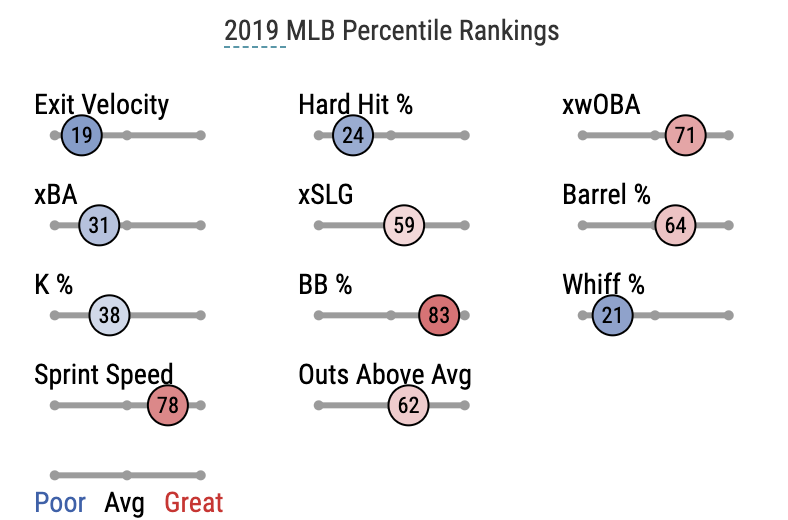
Bryant hasn’t posted an average exit velocity higher than the 31st percentile since 2016. He’s a high launch-angle hitter whose home runs tend to be high flies rather than laser beams. The lack of barrels in 2020 could be considered an issue, but we’re talking about fewer than 100 batted balls (91), so it doesn’t seem fair to bury his ability to square up the ball based on that. His lack of walks and inflated strikeout rate are the most concerning aspects of his season, but neither of them are unprecedented in a 34-game span, which is a better way to conceptualize his season.
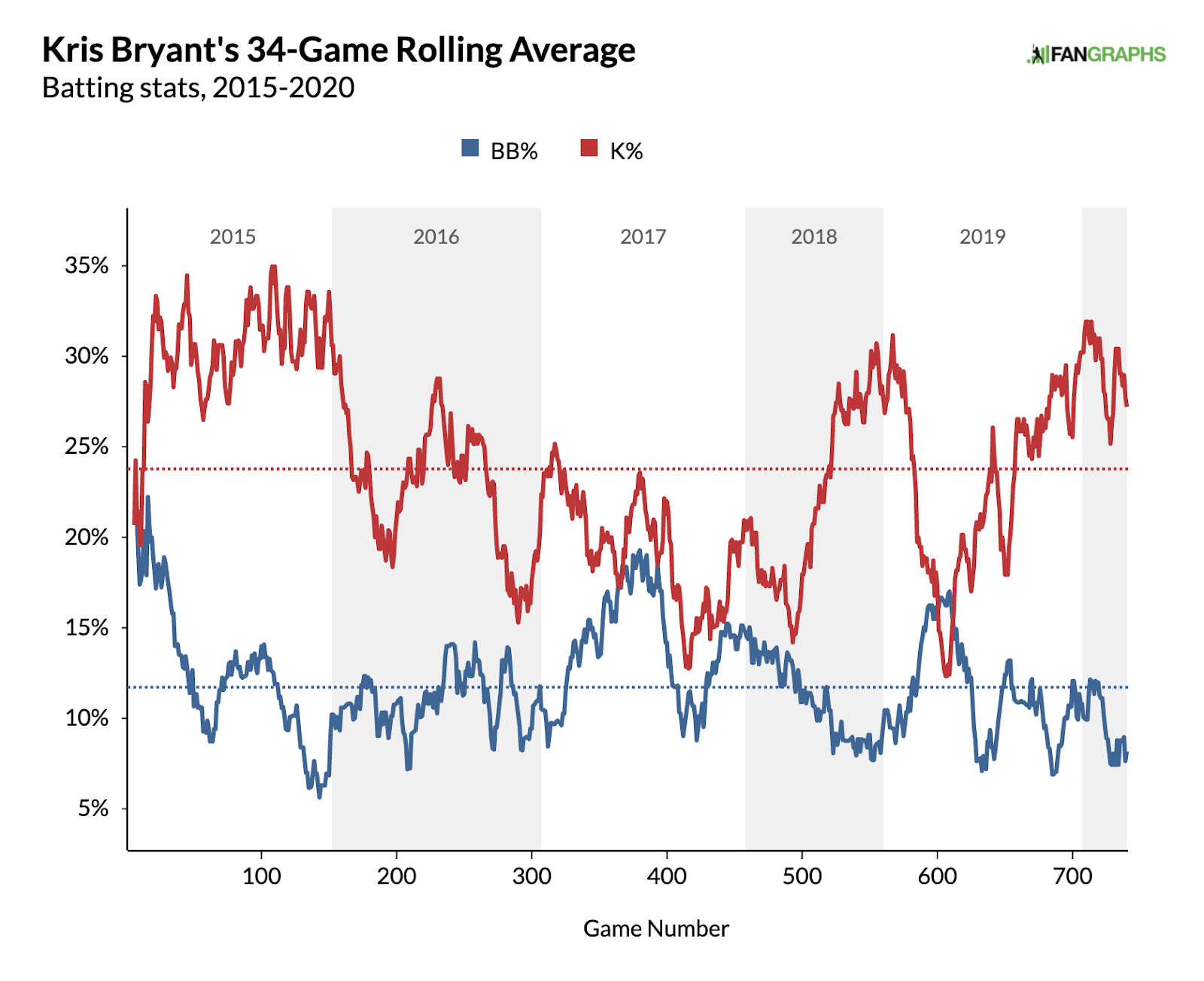
None of this means that Bryant’s 2020 is of no relevance whatsoever. For instance, last year Bryant saw more breaking balls than he’d ever encountered before…
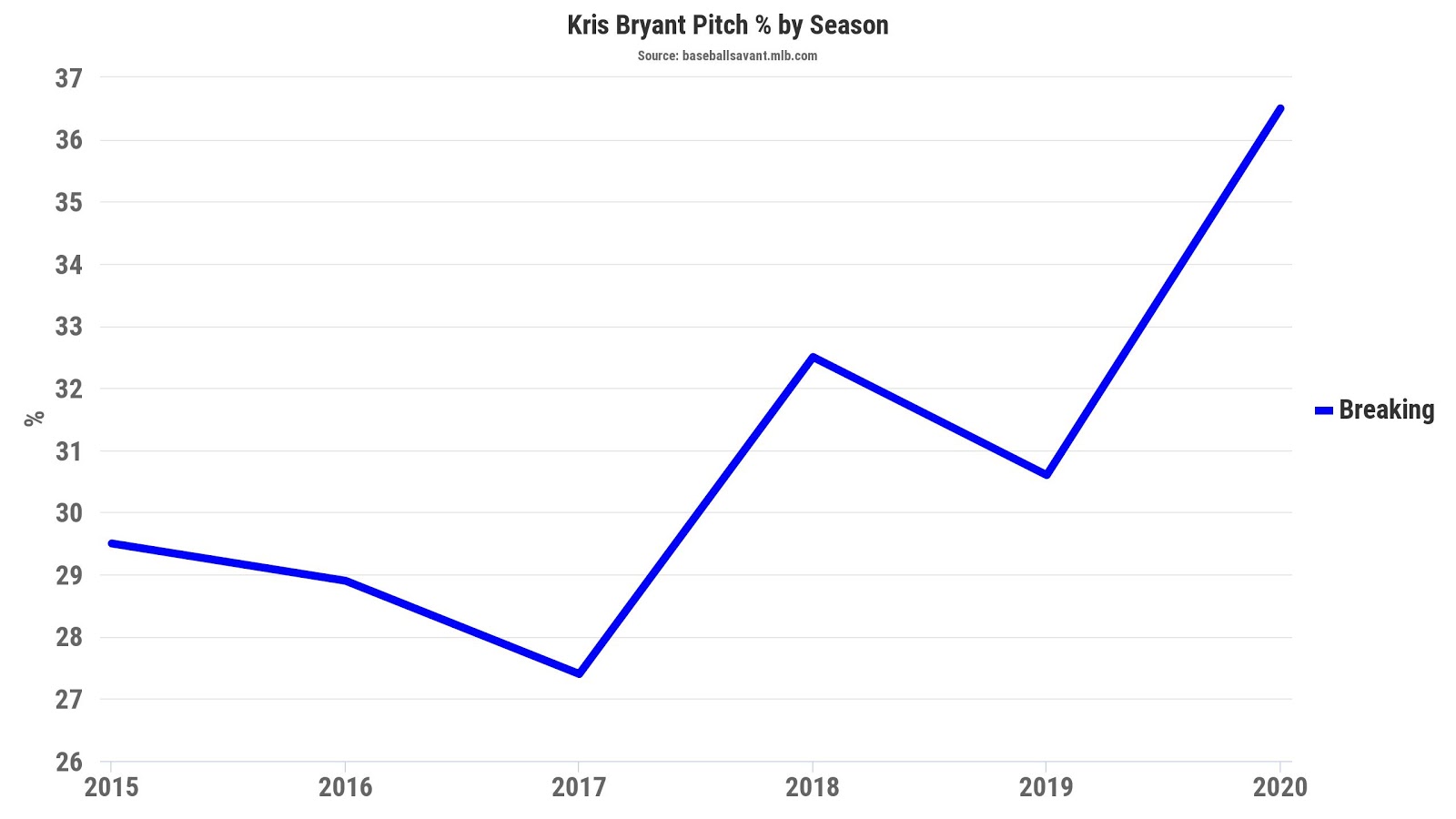
… and handled them particularly poorly with a .128 average and .191 slugging percentage. That’s an indication that there’s an adjustment to be made — but it seems wiser to assume Bryant’s track record indicates he can make adjustments than posit that 147 plate appearances indicate he’s cooked.
Part of what makes the pursuit of Bryant appealing is that there’s buy-low potential with him. If he’d looked like a sure-fire superstar in his most recent action, he’d cost an arm and a leg, and wouldn’t make much sense for the Blue Jays at a hefty price due to his single year of team control. As it stands now, Bryant’s value has been depressed to the point that MLBTradeRumors included him on their non-tender candidate list this off-season.
That may have been a stretch, but he’s not oozing surplus value considering his relatively significant salary and his rough 2020. The Cubs also appear to be motivated to cut payroll, and the Yu Darvish trade tells us that they’re not opposed to prospect-based deals — even if those prospects are years away from cracking the major leagues.
Pursuing Bryant would allow the Blue Jays to round out their infield, while keeping the vast majority of their best trade chips. Bryant’s ability to play the outfield could even give Guerrero Jr. a chance to dabble at playing third base again as an audition for 2022. If Bryant plays so well he warrants extension consideration, that’d be a good problem to have.
If Bryant was the Blue Jays’ Plan A, they probably would’ve scooped the third baseman up when they first checked in on him weeks ago. The Cubs are unlikely to be holding onto soon-to-be free agents too tightly, and it’s hard to imagine a trade would be cost-prohibitive. Now that a few more pieces are off the board, he could be a promising contingency plan for the infield — especially as part of a larger class of off-season adds.
[relatedlinks]

